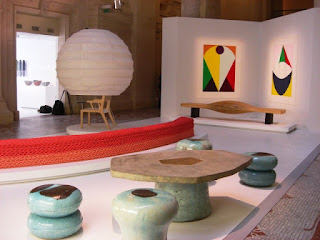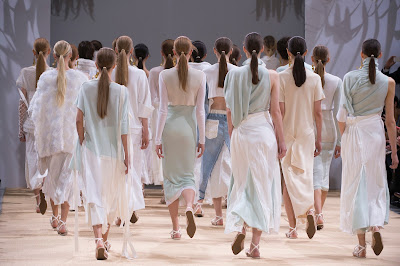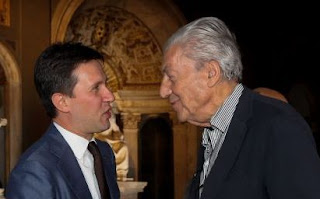Fans of Korean culture are enjoying a bounty of art shows and
other events across France as the Asian country takes centre stage during the
“2015-2016 France-Korea Year”.
The festivities started in September, when Korean Prime
Minister Hwang Kyo-ahn made an official visit to France, and they will continue
until next August. Events include art exhibitions, film retrospectives,
culinary demonstrations, concerts and conferences, all in celebration of the
130th anniversary of diplomatic relations between the two countries.
 |
| A section of the "KOREA NOW!" exhibition. |
According to the French government, the France-Korea Year
reflects the nations' joint determination to “strengthen relations in all areas”. It
will also highlight “innovation" in different sectors.
A key event is the exhibition titled “KOREA NOW! Design,
craft, fashion and graphic art in Korea”, at the Musée des Arts Décoratifs
(Decorative Arts Museum), located in a wing of the Palais du Louvre in
Paris.
Comprising some 700 objects by 150 artists, artisans and
designers, the show aims to introduce viewers to Korea’s “formidable artistic
patrimony”, as the curators put it. The exhibition is striking for the clean,
modern lines of the items on display, whether pottery, furniture or clothing.
Other exhibitions include a look at five centuries of
painting in Korea, with the “Tigres de papier,” show at the Musée national des
arts asiatiques-Guimet, also in Paris, and various contemporary art offerings.
The eastern town Dijon (famous for its mustard) will host the
show “Lee Ungno & Han Mook : Two Modernist Korean Painters in Paris”. This
exhibition, which runs from Oct. 30 to Jan. 30, 2016, looks at the work of two
artists who were among the first Korean modernists. Both left their homeland
for “artistic exile” in Paris - the city of their dreams - after the Korean War
and the partition of their country.
 |
| A Korean cook gives a demonstration in Paris. |
On the culinary art front, Korean chefs will be giving a twist to nouvelle cuisine in restaurants and cooking schools across France.
Earlier this month, for instance, the famous Ferrandi School in Paris hosted a memorable four-hour dinner that could only be described as a gastronomic "dialogue" between France and Korea: each course contained a mouth-watering specialty from both countries that had diners expressing sounds of delights - in a variety of languages. - Tasshon
Earlier this month, for instance, the famous Ferrandi School in Paris hosted a memorable four-hour dinner that could only be described as a gastronomic "dialogue" between France and Korea: each course contained a mouth-watering specialty from both countries that had diners expressing sounds of delights - in a variety of languages. - Tasshon
 |
| Some of the ingredients in Korean cuisine. |











































